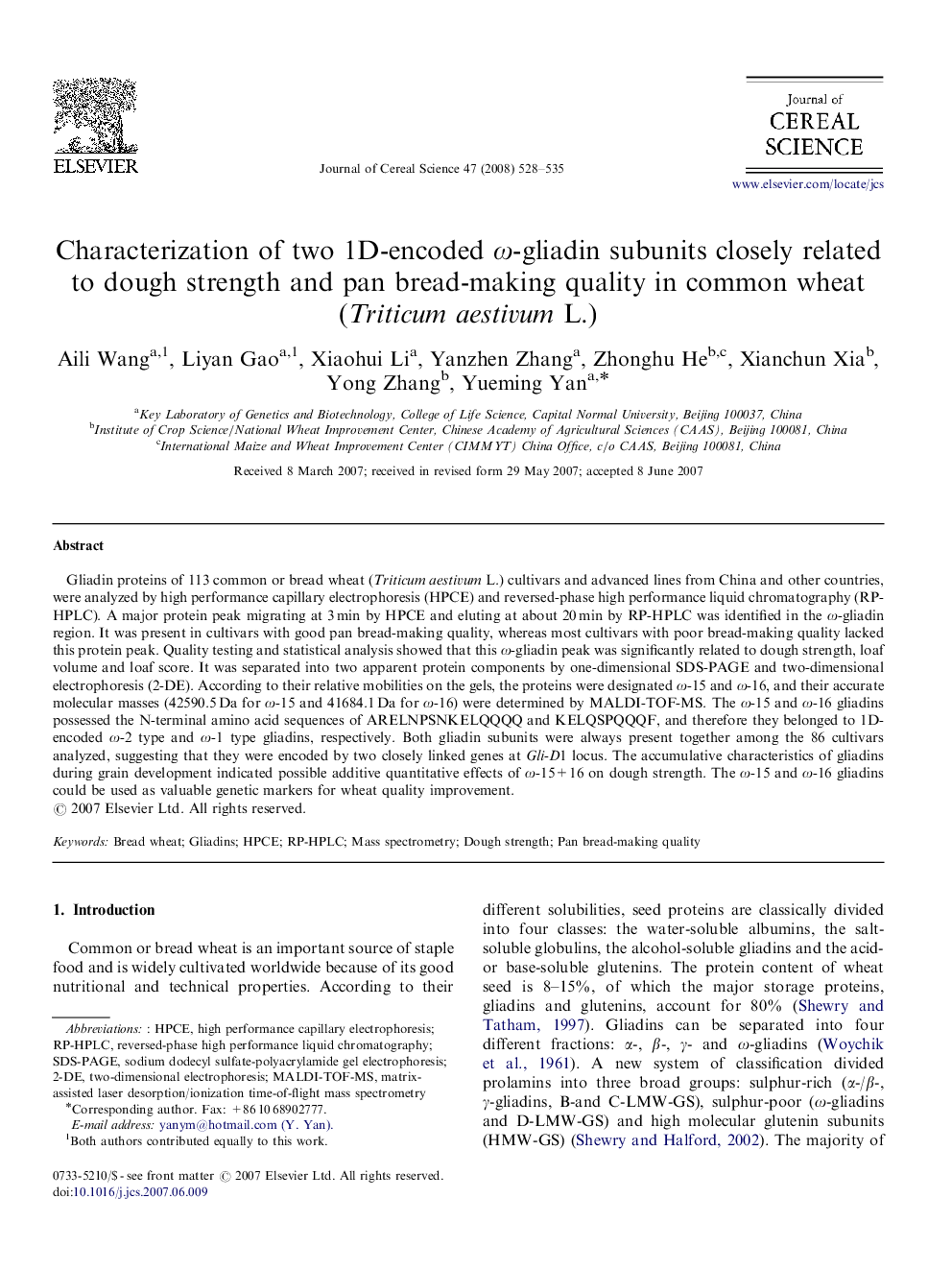| Article ID | Journal | Published Year | Pages | File Type |
|---|---|---|---|---|
| 4516578 | Journal of Cereal Science | 2008 | 8 Pages |
Gliadin proteins of 113 common or bread wheat (Triticum aestivum L.) cultivars and advanced lines from China and other countries, were analyzed by high performance capillary electrophoresis (HPCE) and reversed-phase high performance liquid chromatography (RP-HPLC). A major protein peak migrating at 3 min by HPCE and eluting at about 20 min by RP-HPLC was identified in the ω-gliadin region. It was present in cultivars with good pan bread-making quality, whereas most cultivars with poor bread-making quality lacked this protein peak. Quality testing and statistical analysis showed that this ω-gliadin peak was significantly related to dough strength, loaf volume and loaf score. It was separated into two apparent protein components by one-dimensional SDS-PAGE and two-dimensional electrophoresis (2-DE). According to their relative mobilities on the gels, the proteins were designated ω-15 and ω-16, and their accurate molecular masses (42590.5 Da for ω-15 and 41684.1 Da for ω-16) were determined by MALDI-TOF-MS. The ω-15 and ω-16 gliadins possessed the N-terminal amino acid sequences of ARELNPSNKELQQQQ and KELQSPQQQF, and therefore they belonged to 1D-encoded ω-2 type and ω-1 type gliadins, respectively. Both gliadin subunits were always present together among the 86 cultivars analyzed, suggesting that they were encoded by two closely linked genes at Gli-D1 locus. The accumulative characteristics of gliadins during grain development indicated possible additive quantitative effects of ω-15+16 on dough strength. The ω-15 and ω-16 gliadins could be used as valuable genetic markers for wheat quality improvement.
